
Light is a crucial element in the success of hydroponic gardens, directly influencing the growth and health of indoor plants. For those managing hydroponic gardens, understanding the balance between natural lighting and artificial lighting is essential. The right lighting fixtures, such as grow lights, provide the necessary spectrum that plants require for optimal photosynthesis. With various options available, selecting the best lighting options for indoor hydroponic gardens can enhance growth rates and overall plant vitality. Choosing appropriate light fixtures tailored to the needs of specific plants ensures that indoor gardens thrive, regardless of external conditions.

Light serves as a vital energy source for plants, driving their growth and development through the process of photosynthesis. The selection of appropriate plant grow lights can significantly influence the health and yield of hydroponic gardens. Options such as LED lighting, fluorescent lights, and high-pressure sodium (HPS) lighting are commonly utilised. Metal halide lighting also plays a crucial role in providing the spectrum needed for various stages of plant growth. Exploring the best lighting options for indoor hydroponic gardens is essential for optimal plant performance.
The efficiency and effectiveness of light bulbs can vary greatly depending on the technology used. Tube lights and discharge lamps are popular choices among gardeners for their ability to provide consistent coverage. Effective growing lamps can simulate natural sunlight, which is key for photosynthetic activity. Selecting the right fluorescent lighting or LED options allows for specific light spectrum adjustments to suit different plant needs. Ultimately, understanding these elements is fundamental for anyone aiming to create a successful hydroponic environment.
The process of photosynthesis relies heavily on the quality and spectrum of light provided to plants. Hydroponics systems benefit from artificial light that mimics the natural sunlight spectrum, maximising plant growth and yield. This is particularly crucial for herb gardens, where the right light fixture can make all the difference. High pressure sodium lamps are frequently used in these setups due to their excellent output in the yellow and red spectrum, making them one of the best lighting options for indoor hydroponic gardens.
Selecting the appropriate bulbs is essential for achieving optimal photosynthesis. Light emitting ceramic lamps stand out for their efficiency and ability to produce a full spectrum of light, promoting vigorous plant health. Choosing the right combination of lamps and fixtures can substantially enhance the quality of hydroponic systems. By understanding the specific light needs of plants, gardeners can identify the best lighting options for indoor hydroponic gardens that will support robust and healthy growth.
Selecting the right lighting for hydroponic systems is crucial to ensure optimal plant growth. LED lights have become increasingly popular due to their energy efficiency and full spectrum capability, making them one of the best lighting options for indoor hydroponic gardens. On the other hand, fluorescent grow lamps are effective for growing house plants, providing a balanced spectrum for healthy development. For those seeking intensity, high-intensity discharge (HID) lamps, including HPS lamps, offer robust solutions with significant lumen output, catering to the needs of larger gardens. Incandescent bulbs, while commonly used, are less efficient compared to modern alternatives. Understanding these options allows growers to choose the right growing light that suits their specific indoor gardening requirements.
A popular choice for hydroponic gardens, these light sources mimic the spectrum of sunlight, promoting healthy plant growth. Their energy efficiency surpasses that of traditional metal halide lamps, making them an economical option for indoor cultivation. Using LED bulbs also allows for a longer lifespan compared to conventional light sources, reducing the frequency of replacements. Placing a desk lamp fitted with light emitting diodes close to your plants can enhance photosynthesis while maintaining a controlled environment.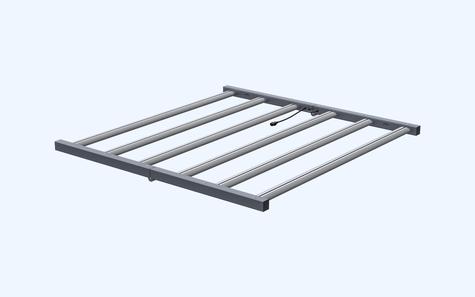 These lights produce less heat than other options, which helps reduce the need for extensive ventilation systems. As a result, maintaining optimal growing conditions becomes easier, ensuring an ideal balance of temperature and humidity. For anyone seeking the best lighting options for indoor hydroponic gardens, incorporating LED technology is a smart decision. With versatile setups and adjustable intensity, these lights can be tailored to suit the specific growth stages of various plants.
These lights produce less heat than other options, which helps reduce the need for extensive ventilation systems. As a result, maintaining optimal growing conditions becomes easier, ensuring an ideal balance of temperature and humidity. For anyone seeking the best lighting options for indoor hydroponic gardens, incorporating LED technology is a smart decision. With versatile setups and adjustable intensity, these lights can be tailored to suit the specific growth stages of various plants.
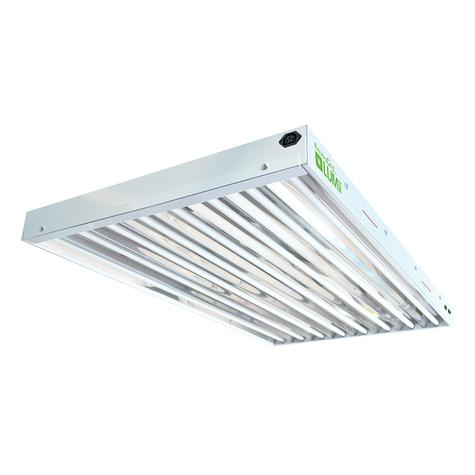
Fluorescent lights are considered one of the best lighting options for indoor hydroponic gardens due to their efficiency and versatility. They provide a consistent and broad spectrum of light that caters to the needs of various indoor plants. Whether you are cultivating leafy greens or flowering plants, these hydroponic grow lights can effectively support growth in different indoor gardens. Their lower heat output allows them to be placed closer to plants without the risk of scorching, making them ideal for compact growing spaces.
These indoor plant lights are available in several lighting options, including T5 and T8 tubes that can easily fit into standard fixtures. Their affordability and low energy consumption also make them attractive for those seeking the perfect indoor hydroponics setup. As part of the best lighting options for indoor hydroponic gardens, fluorescent lights can significantly enhance photosynthesis, contributing to healthier and more productive plants.
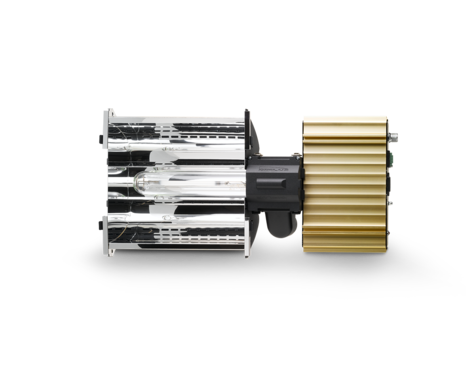
HID lighting is a popular choice among enthusiasts seeking optimal growth conditions for indoor plants. These lighting systems are designed to deliver high-intensity lumens, making them ideal for indoor garden systems that require robust horticultural lighting. For those cultivating indoor herb gardens or other greenery, HID options provide an efficient means of ensuring plants receive the necessary light for healthy development. With various lighting modes available, growers can easily tailor their lighting solutions to match the specific needs of different plants.
Despite their effectiveness, these lighting systems also come with considerations regarding energy consumption and heat production. Proper management of heat is crucial, as HID lights can raise temperatures significantly in confined spaces. Growers must employ adequate ventilation to maintain ideal conditions for their indoor garden. With careful planning and consideration, HID lighting can be one of the best lighting options for indoor hydroponic gardens, supporting vibrant plant growth and maximising yields.
Selecting the right lighting for your hydroponic system is crucial for ensuring a thriving indoor garden. The best grow lights should mimic natural sunlight, providing the necessary lighting colors that facilitate photosynthesis. Each plant has specific light spectrum requirements, influencing their growth and health. Understanding the ideal lighting cycle is essential to maintain optimal indoor garden temperatures, which can significantly affect plant performance. Whether you are looking at LED options or fluorescent systems, investing in quality lighting products helps promote a productive indoor gardening environment. By carefully considering these factors, you can confidently make an informed decision and identify the best lighting options for indoor hydroponic gardens.
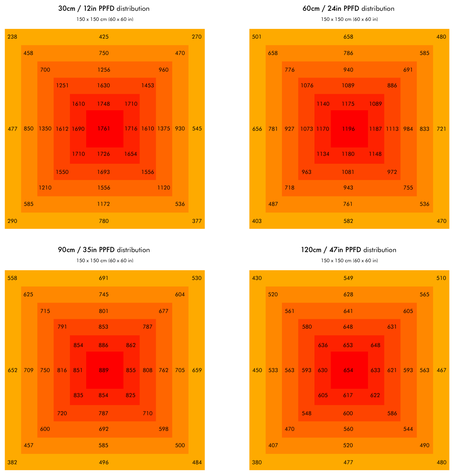
Understanding the specific light spectrum required for various hydroponic plants is crucial for optimising growth. Many plants thrive under different conditions, necessitating the use of the right grow lights to meet their unique needs. The best lighting options for indoor hydroponic gardens often include a combination of different grow lights that can supply the essential wavelengths required during different growth stages. For basic indoor gardening, using a few grow lights that emit the appropriate spectrum can significantly enhance the health and yield of your hydroponic plants.
To achieve successful hydroponic gardening, a consistent lighting schedule is essential. Plants indoors require a reliable source of light, and indoor flood lights can be a practical solution for maintaining adequate illumination. Propagation lighting should also be tailored to accommodate the diverse requirements of seedlings and mature plants alike. By experimenting with various light sources, growers can determine the most effective light spectrum for their specific crop needs, ensuring robust growth and vibrant plants.
Selecting energy-efficient lighting is crucial for optimising the performance of indoor hydroponic gardens. Many lights, such as LED systems, not only consume less power but also provide tailored light spectrums that promote plant growth more effectively than traditional incandescent grow lights. While incandescent grow lights may be cheaper upfront, they often lead to higher electricity costs over time. Using flexible lights or a combination of multiple lights can help distribute light evenly across your garden, ensuring that each plant receives the necessary illumination without excessive wattage.
The use of standard light fixtures with energy-efficient bulbs can create an effective lighting setup. For nighttime lighting, extendable lights can be deployed to prevent energy wastage while still providing adequate brightness. By assessing the wattage lights chosen and their placement, gardeners can ensure that they are utilising the best lighting options for indoor hydroponic gardens. Choosing the right lighting not only aids in plant growth but also supports sustainable gardening practices, making it an essential consideration for any hydroponic grower.

The initial investment in hydroponic lighting varies significantly, influenced by the type and quality of lights chosen. Experienced indoor gardeners often recommend full-spectrum lighting for optimal growth, as these bright lights can cater to a plant's varied needs throughout its life cycle. While CMH grow lights and LED options may be pricier upfront, their longevity and efficiency can lead to substantial savings over time. In contrast, cheap lights or basic strip lights may save money initially but often require more frequent replacements, impacting the overall cost-effectiveness in the long run.
Lifespan is another critical factor to consider in your indoor grow room setup. High-quality options like CMH and LED systems typically have longer lifespans compared to fluorescent tubes or basic grow lights. This durability means they can withstand the rigours of continual use in a garden system, providing consistent light without frequent replacements. Investing in the best lighting options for indoor hydroponic gardens means choosing fixtures that not only meet your plants' lighting requirements but also offer a reliable return on investment over the years.
For anyone seeking the best lighting options for indoor hydroponic gardens, the choice of fixtures can significantly impact plant health and growth. LED lighting remains a popular option due to its energy efficiency and long lifespan. High-quality led grow lights with adjustable lamp heads allow for precise positioning, ensuring plants receive the proper light levels at different growth stages. For a more budget-friendly approach, standard lamps and barrina strip lights can effectively cater to home gardens, offering flexibility for various hydroponic system setups. Finding the right indoor solution, whether through end lights or more advanced LED options, is essential for optimising plant yields in your indoor hydroponic garden.
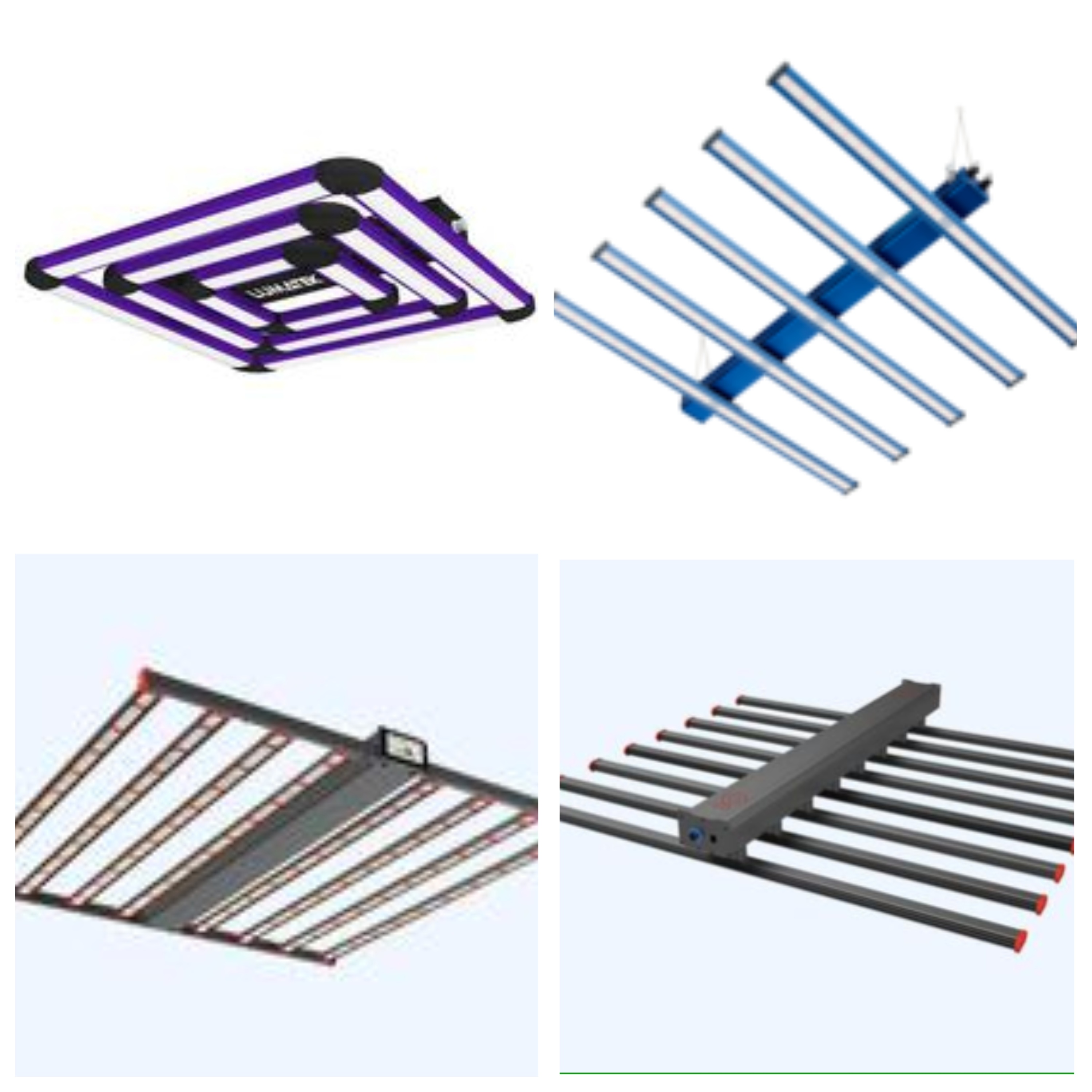
LED grow lights stand out as some of the best lighting options for indoor hydroponic gardens. Their energy efficiency and long lifespan make them ideal for hydroponic grow systems, especially in vertical hydroponic grow setups. Many options incorporate individual light bulbs that can be adjusted based on specific plant needs. This versatility allows growers to optimise light distribution across various configurations, including hydroponic rail systems, ensuring that every plant receives adequate illumination.
A popular choice among growers is the use of light panels, which offer uniform light coverage and help to maximise the efficiency of watt propagation lights. These panels not only cater to the specific wavelengths required for photosynthesis but also enhance the overall productivity of a highly-productive hydroponic system. Selecting the right LED grow light is crucial for achieving the best results in indoor gardening, making it one of the best lighting options for indoor hydroponic gardens.
Fluorescent lighting is a popular choice among enthusiasts seeking the best lighting options for indoor hydroponic gardens. These lamps are ideal for a stack-n-grow lights system, providing an effective solution for various plant types. They deliver ample sunlight for both low-light plants and those that thrive under brighter conditions. The versatility of desktop lights and fixture designs ensures that growers can optimise their light area to support the hydroponic growing process, catering to the specific needs of each plant.
Basic indoor fluorescent lights are suitable for those who desire an efficient and economical option. These plant lights can mimic natural light, offering a balance that supports healthy growth without excessive heat generation. For those interested in a more comprehensive setup, combining fluorescent lighting with other systems can enhance their indoor garden's performance, ensuring that it meets the demands of all plants involved. Achieving the right combination is key to thriving hydroponic gardens.
HID lighting options, specifically HPS grow lights, are widely regarded as some of the best lighting options for indoor hydroponic gardens. These high-pressure sodium bulbs are particularly effective for high-light plants that require ample usable light for optimal growth. Their ability to emit a warm and intense spectrum makes them ideal for flowering and fruiting stages. However, employing HPS lights also necessitates a thoughtful light setup, as it produces significant heat that can quickly escalate. Proper ventilation is essential to ensure that the surrounding temperature remains manageable and conducive for plant health.
Other effective HID options include metal halide lights, which emit a cooler spectrum suitable for vegetative growth. These lamps are great for propagation lights, making them a versatile choice for indoor setups. Standard-sized lamps are widely available, allowing easy integration into various spaces, including those transitioning from outdoor plant setups. While HID lighting can be expensive upfront, its longevity and superior light output often make it a worthwhile investment for those committed to maximising their indoor gardening potential. For anyone seeking the best lighting options for indoor hydroponic gardens, considering HID fixtures is crucial.
Properly setting up lighting is crucial for cultivating a successful indoor garden. Selecting from the best lighting options for indoor hydroponic gardens can significantly impact plant growth. A wattage grow light should be chosen based on the specific needs of the plants, ensuring that each separate lamp provides adequate illumination without overwhelming them. For plants that thrive on warm light, popular Osram lamps are an excellent choice. It’s essential to mimic natural sunlight as much as possible, including using wipe lights for reflection and diffusion. Avoid direct sunlight exposure to prevent overheating, while maintaining an optimal distance between the lamps and plants to support their self-watering feature effectively.
Choosing the right placement for your hydroponic lighting is crucial for optimal plant growth. Consider positioning your lights above a sunny windowsill or in an otherwise dark room to ensure your plants receive good light exposure. A height adjustable fixture allows for flexibility, ensuring that you can monitor plants closely as they grow. Take care to avoid light burn by keeping the watt light at an appropriate distance from the foliage.
Installation of hydroponic lighting should take into account the specific needs of your herbs indoors. Select a light fixture that delivers quality light across the spectrum required for photosynthesis. Regular light fixtures can be useful, but investing in the Best Lighting Options for Indoor Hydroponic Gardens will yield better results. Ensuring that your setup provides enough sunlight will promote healthy growth and enhance the vitality of your indoor garden.
Effective light duration is crucial for optimal plant growth in hydroponic systems. Hydroponic farmers must carefully manage the settings in their grow rooms to ensure that their plants receive the appropriate amount of light each day. Using advanced tools like a 6-bulb fixture or dual-spectrum lamps can enhance this process. It's essential to experience hanging fixtures properly with light hangers to maximise light coverage and ensure that all grow light plants receive adequate illumination.
Adjusting the light duration according to the plant's growth stage can lead to significant improvements. Young seedlings typically require longer light periods, while mature plants may benefit from reduced exposure. Hydroponic farmers should regularly check their bulbs and change bulbs as necessary to maintain consistent light output. Selecting the Best Lighting Options For Indoor Hydroponic Gardens can greatly enhance growth efficiency, making it vital to establish an efficient light schedule tailored to specific plant needs.
Identifying and resolving lighting issues is essential for maintaining a thriving hydroponic garden. If plants show signs of stress, it might indicate they are not receiving enough light or that the brightness settings are not optimal. Regularly shifting plants and adjusting light height can help in achieving uniform exposure, especially for non-flowering house plants that thrive under fluorescent light sources. Exploring the best lighting options for indoor hydroponic gardens will provide insights into effective light management, aiding in the overall health of your plants.
Selecting the best lighting options for indoor hydroponic gardens is crucial for successful plant growth. Various light kits are available that cater to different needs, featuring multiple fixtures to enhance light coverage. Using high-quality LEDs or HPS bulbs can ensure that plants receive a natural-looking light spectrum, essential for optimal photosynthesis. Investing in systems with different dimmer settings allows for adjustments based on plant growth stages, promoting healthier development. For those on a budget, there are cheap light alternatives that still provide adequate support for indoor gardens. A well-thought-out lighting setup, including robust light stands and appropriate fixture placement, will ultimately lead to thriving plants and successful hydroponic gardening.
For a thriving hydroponic garden, consider using HPS lighting and full-spectrum lights, which are excellent choices for high intensity discharge lamps. These hydroponic lights ensure that your indoor garden thrives by providing the essential light spectrum that natural light plants need. If you're on a budget, cheap grow lights can still provide a decent indoor grow environment. A proper light setup doesn't require separate lamps for different stages if you select full spectrum lighting, but ensure that you can adjust light height and position as plants shift and grow. Implementing a system with great light helps maintain the ideal conditions for your grow room methods, while also considering UV-B emitting indoor options for enhanced growth.
When selecting lights for your hydroponic garden, it's essential to consider full spectrum lights, as they provide the best conditions for your indoor garden thriving. Your hydroponic garden relies on the right light to promote healthy growth, and knowing how the lights work will help you make an informed decision. If your indoor garden pick doesn't supply adequate light, your plants may not flourish like those grown in an outdoor space. Keep in mind that the right light occupies a specific spectrum, ensuring that as you shift plants within your garden, they receive consistent quality lighting. Thus, it's crucial to choose the best lighting options carefully; otherwise, your indoor garden doesn't achieve its full potential.
If the light doesn’t provide adequate intensity or spectrum for your indoor hydroponic garden, it is essential to reassess your lighting setup. Ensure that you are using full-spectrum LED or fluorescent grow lights, as these can significantly enhance the growth of your plants. Additionally, consider the distance between the plants and the light source, as too much distance can lead to inadequate light penetration. Regularly monitoring plant health will also inform you if adjustments are needed.
Different types of lighting systems, such as LED, fluorescent, and HPS lights, have distinct effects on the growth of plants in an indoor hydroponic garden. Using the right lighting system can enhance photosynthesis, promote healthy growth, and improve yield. It's important to evaluate the intensity, spectrum, and energy efficiency of the lights to ensure optimal conditions for your hydroponic setup.
To determine the optimal lighting schedule for your indoor hydroponic garden, consider factors such as the type of plants you are growing, their growth stages, and the specific light spectrum they require for photosynthesis. Generally, most plants benefit from 12 to 18 hours of light daily, but you should observe your plants for signs of stress or stretching, which may indicate inadequate light or an unsuitable schedule.